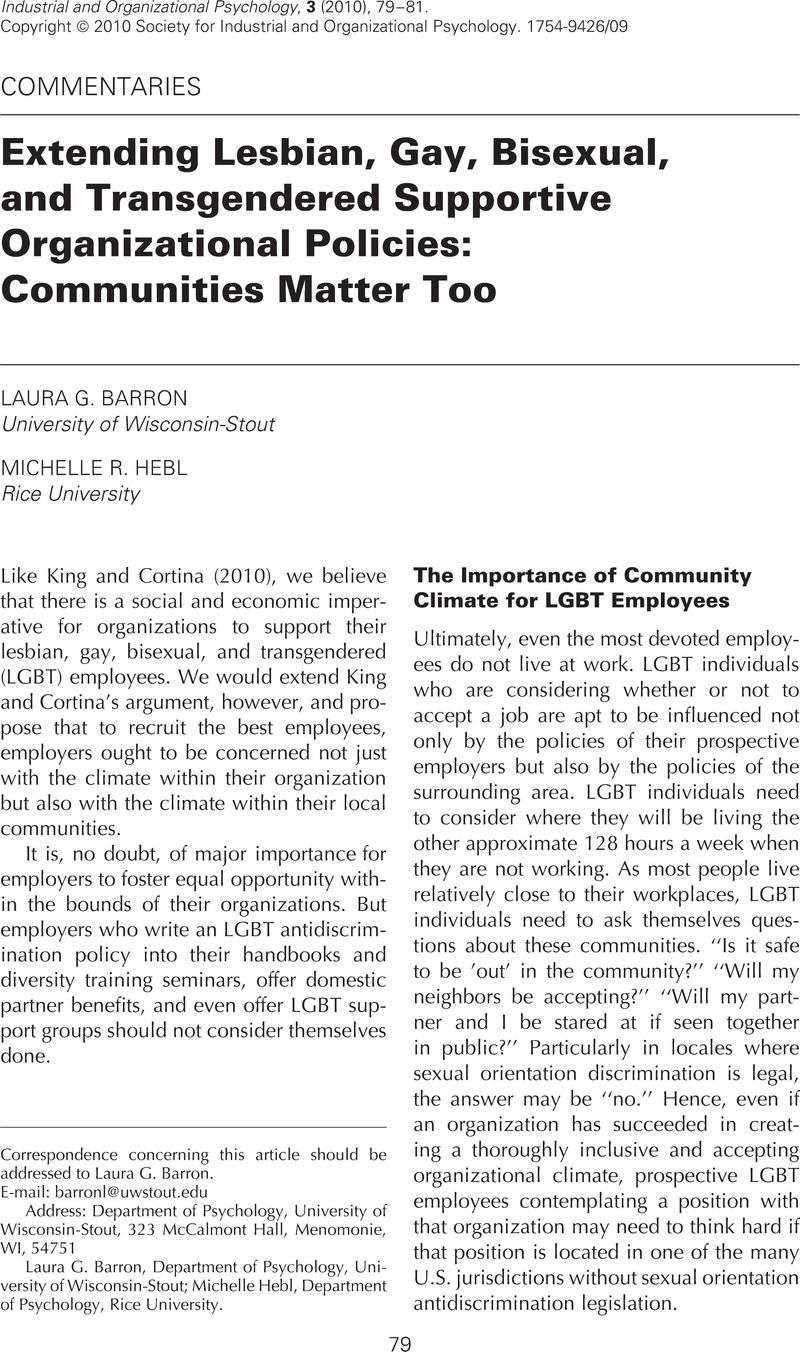Crossref Citations
This article has been cited by the following publications. This list is generated based on data provided by Crossref.
King, Eden B.
and
Cortina, José M.
2010.
Stated and Unstated Opportunities and Barriers to Lesbian, Gay, Bisexual, and Transgendered Supportive Organizations.
Industrial and Organizational Psychology,
Vol. 3,
Issue. 1,
p.
103.
Hebl, Michelle
Barron, Laura
Cox, Cody Brent
and
Corrington, Abigail R.
2016.
The efficacy of sexual orientation anti-discrimination legislation.
Equality, Diversity and Inclusion: An International Journal,
Vol. 35,
Issue. 7/8,
p.
449.
Cox, Cody B.
Young, Friederike K.
Guardia, Adrian B.
and
Bohmann, Amy K.
2018.
The Baby Boomer bias: The negative impact of generational labels on older workers.
Journal of Applied Social Psychology,
Vol. 48,
Issue. 2,
p.
71.



